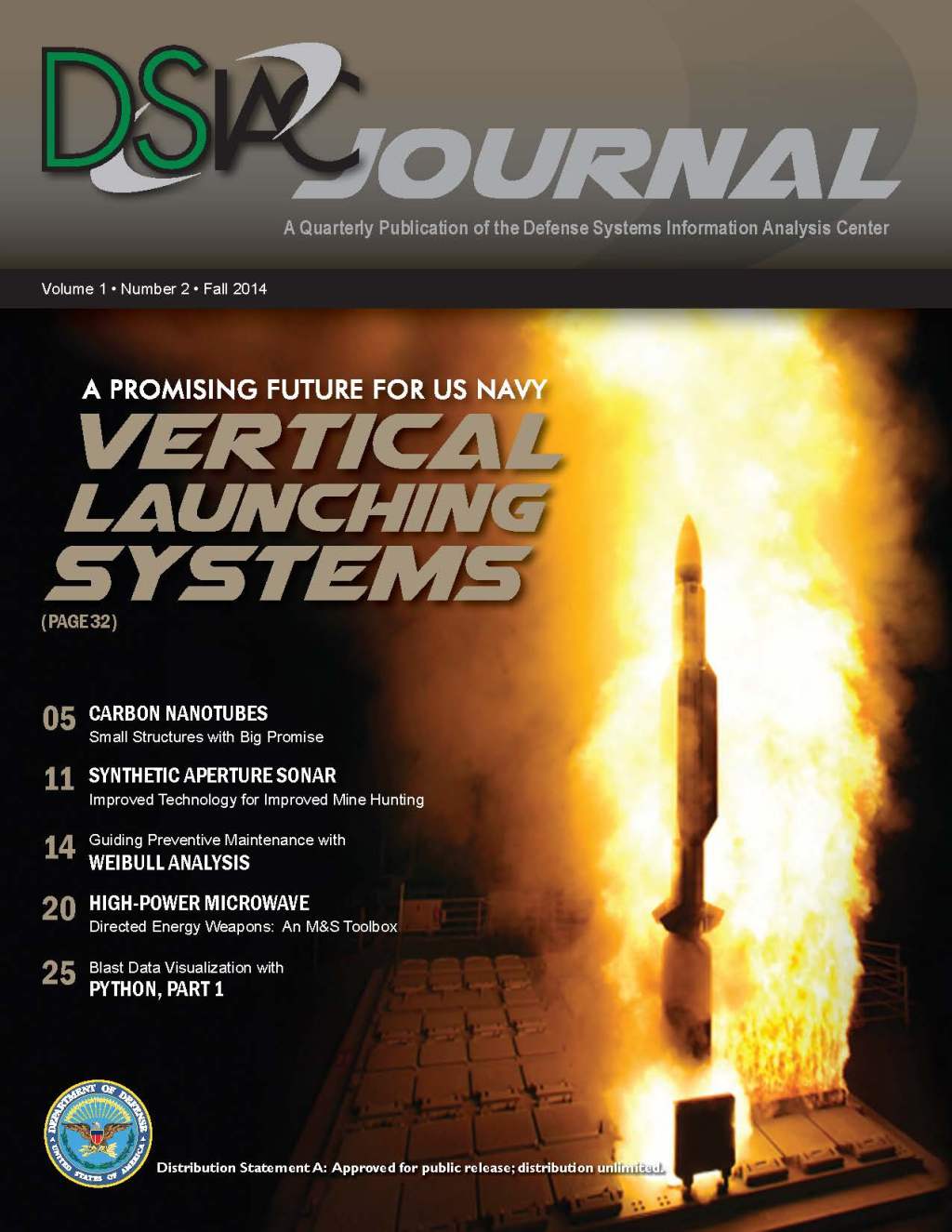In an age of increasingly tighter DoD budgets and heightened acquisition scrutiny, leveraging successes has become more important than ever. One shining example is the U.S. Navy’s Aegis Weapon System. This weapon system, which includes the Mk 41 Vertical Launching System (VLS), has racked up a remarkable track record over the past several decades and appears to be poised for an even greater role in fleet protection and ballistic missile defense. In this fall edition of the DSIAC Journal, our feature Weapons Systems article presents a historical synopsis of the Navy’s VLS and provides a glimpse of emerging research and development (R&D) trends and the expanded roles this exceptional system will fulfill in the future.
Composed of tiny tubular cylinders of carbon atoms, carbon nanotubes (CNTs) are generating a lot of interest in commercial and military sectors with their extraordinary mechanical, electrical, thermal, optical, and chemical properties. Paul Wagner’s Advanced Materials article on CNTs discusses current R&D trends and several state-of-the-art applications where these unique structures are demonstrating great promise.
Likewise, the Military Sensing article by Brett Israel and Jennifer Weaver Tate discusses synthetic aperture sonar (SAS) R&D trends being applied to support the Navy’s mission of keeping the U.S. fleet safe from submerged mines, which remain an ever-increasing and serious threat. The improved SAS technology also shows great promise to help search for submerged structures, including sunken ships or aircraft, such as the Malaysian commercial airliner that suddenly disappeared last March.
In our Reliability and Maintainability article, Richard Wisniewski discusses the ability of Weibull analysis to guide many preventive maintenance decisions. This analytical approach is commonly used to make predictions about the life of a system for a given population by fitting a statistical distribution to life data from a representative sample. The parameterized distribution of data can be used to estimate important life characteristics of the system, such as reliability or probability of failure at a specific time, the mean life, and the failure rate. This article demonstrates how the application of this technique can provide a means for assessing the impact and consequence of a failure.
Also, John Tatum’s Directed Energy article provides an overview of a few modeling tools currently in use or in development that can help analyze a system’s vulnerability and the lethality of current and emerging high-power microwave (HPM) directed energy weapons (DEWs). There is a growing belief that DEW systems are most likely to change the way future battles are planned and fought. Thus, the importance of DEW modeling tools continues to grow as many of these systems edge closer to reality.
Finally, for those readers who might have a hard time grasping the invisible, Will Woodham’s Survivability and Vulnerability article is the first of a two-part series on visualizing blast data with the Python programming language. This article includes a few simple examples of code to help transform test data into color graphics. In next quarter’s issue, he’ll discuss how to generate 3-D animations. So stay tuned.


